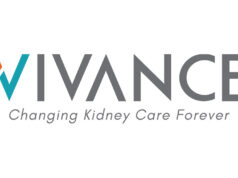 Dialyze Direct has announced that its findings regarding the effect of more frequent dialysis for end-stage kidney disease (ESKD) patients in skilled nursing facilities (SNFs) have been peer-reviewed by Hemodialysis International and published in an article entitled “Post-Dialysis Recovery Time in ESRD Patients Receiving More Frequent Hemodialysis in Skilled Nursing Facilities”.
Dialyze Direct has announced that its findings regarding the effect of more frequent dialysis for end-stage kidney disease (ESKD) patients in skilled nursing facilities (SNFs) have been peer-reviewed by Hemodialysis International and published in an article entitled “Post-Dialysis Recovery Time in ESRD Patients Receiving More Frequent Hemodialysis in Skilled Nursing Facilities”.
The research determined that more rapid post-dialysis recovery time (DRT) occurred in patients receiving five dialysis treatments each week, compared to DRT reported for the conventional approach of three weekly treatments. In addition, rapid recovery is associated with reduced mortality and fewer hospitalisations, the research indicates.
“With conventional dialysis, nursing home patients typically require a prolonged period of time to recover from the effects of each dialysis treatment. Our findings in this patient population receiving more frequent dialysis show patients are able to participate in activities much sooner post-dialysis,” said Alice Hellebrand, chief nursing officer and senior vice president at Dialyze Direct, and a co-author of the article. “Nearly 80% of the patients reported recovering in an hour or less, and 92% recovered in less than two hours.”
For the study, Dialyze Direct medical professionals asked patients receiving more frequent dialysis (at least 14 treatment hours each week) at their associated SNFs across 12 US states to describe their DRT following their treatment. This was done from 4 November 2019 through 11 June 2021.
The predefined DTR categories were 0–0.5 hours, 0.5–1 hour, 1–2 hours, 2–4 hours, 4–8 hours, 8–12 hours, by next morning, or not even by the next morning. Of the patients that met the statistical modelling inclusion criteria, 92% reported DRT of two hours or less. Lower odds of rapid DRT were observed for patients who were older, missed their previous treatment or experienced dialytic hypotension complications. Greater odds of rapid DRT were observed in patients receiving five dialyses in the previous week or having 160–179mmHg pre-haemodialysis systolic blood pressure.
“The results are encouraging for patients and providers who have been seeking ways to improve the quality of life for SNF patients,” said Dialyze Direct’s chief medical officer, one of the senior authors of the article, Allen Kaufman. “As we continue our efforts to systematically learn what is of benefit to the SNF dialysis population, we view these results as highly promising in potentially enhancing the ability of our patients to participate in rehabilitation and restorative services while living in the SNF, which will be the subject of our next set of studies.”












